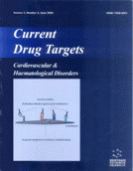Abstract
Current models of oncogenesis describe cancer as a progression of genetic mutations in a tumor cell mass. However, tumors are more than a clonal expansion of malignant cells. Tumors are heterogeneous, with a complex 3D structure, analogous to organs comprised of different tissues. In a tumor mass, the component cell types interact with each other and with their microenvironment by exchanging information through cell-cell interactions and / or through interactions with the extracellular matrix (ECM). These synergetic interactions facilitate tumor progression. Furthermore, tumor invasion and metastatic development are accomplished through the breakdown of ECM. Disruption of ECM promotes abnormal inter- and / or intra- cellular signaling, leading to dysregulation of cell proliferation, growth and cytoskeleton reorganization. The disruption of the ECM in turn promotes the overproduction of growth factors, which induce elevated epithelial cell proliferation and other abnormalities including carcinogenesis. In this review we will demonstrate that hyaluronan (HA), a core component of ECM, contributes to certain types of cancer development. Additional to extracellular HA, intracellular and nuclear forms of HA have been detected. Intracellular HA is involved in cell signaling, whereas nuclear HA could promote chromatin condensation and thus facilitate mitosis. HA molecules are synthesized by hyaluronan synthases (HASs)-HAS1, HAS2 and HAS3 enzymes. Dysregulation of HAS genes results in abnormal production of HA and promotion of abnormal biological processes such as transformation and metastasis. The function of HASs appears to be cell and tissue specific. HAS1 maintains a low, basal level of HA. HAS2 is involved in embryonic and cardiac cushion morphogenesis and subsequent development through cell migration and invasion. HAS2 stimulates cell proliferation and angiogenesis. HAS3 appears to favor the malignant phenotype in many types of malignancies. However, the exact function of HAS isoenzymes and their role in cell signaling remains to be elucidated. A better understanding of HA and HASs may facilitate the design of novel therapeutic strategies to counter presumptive cancer-promoting effects of microenvironmental components.
Keywords: carcinogenesis, cytokines, extracellular matrix, proteoglycans, hyaluronan binding protein
 48
48













